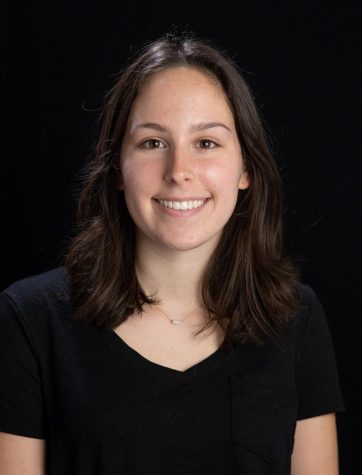Central needs ASL classes
March 10, 2022
Central York High School prides itself on offering many unique classes for its students. From sculpting and culinary to sports medicine and ecology, Central seems to have it all. Yet a gaping hole haunts the language department- an American Sign Language (ASL) class.
ASL is a form of sign language used primarily in the United States and Canada. This language is “spoken” through hand movement and facial expressions. It is used by people who are deaf, hard of hearing or non-verbal. According to StartASL, approximately 500,000 people use sign language on a daily basis. Yet only 1 in 5 schools in America actually teach ASL.
By implementing ASL courses into its curriculum, Central would be able to start taking steps in the right direction to increase inclusivity in the district.
“[Using ASL] includ[es] everybody. If you can’t communicate with them it’s leaving them out,” says Jordan Messinger, a senior who started teaching herself sign language after becoming fascinated with the language.
Messinger started a club to teach other students ASL which has since disbanded. The club was granted money from the district to buy an online course for the students to learn from. Through this action, Central has shown that it supports the idea of students learning ASL but hasn’t made any moves to pursue the subject.
Teaching students ASL encourages discussions about the deaf community. By educating students on the struggles the community faces like lack of accessibility and the improvements they’ve introduced to society, students are given a better understanding of the world around them.
“We have a lot of students who use sign to communicate who are not deaf (autism, mutism, etc),” said Elizabeth Goheen, a middle school teacher who helped lead an ASL club.
If a larger portion of students are equipped with the tools and resources to communicate with those students often left out, think of how inclusive our school community will be.
Along with helping students better communicate with others at school, students can also better communicate with family members at home. Children of deaf parents (CODA) pick up sign language as they grow up but are still picking up new signs.
“As a CODA, I know a lot about [ASL] but I’m still trying to learn more every single day,” said Jason Reed, a substitute teacher whose parents are both deaf.
With the many resources available to the district and the diverseness of the student body, it only makes sense for Central to add ASL courses to its curriculum.
Voices in the hall:
If Central offered an ASL class, would you take it?
“Yeah. It would be a very useful skill to have.” Marc DiPiano, 12th Grade
“I would take it.” Zoe Hoachlander, 12th Grade
“I would definitely take the class. I had a deaf person come into my old work and I felt so bad that I couldn’t communicate with them.” Jack Wilson, 12th Grade

